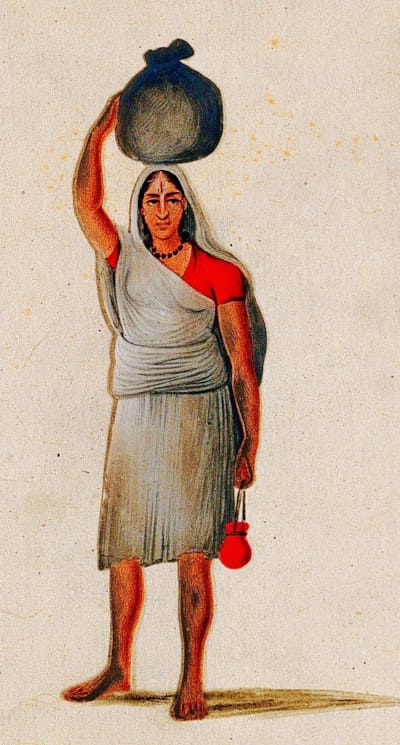Veranda Tales-Too much of a good thing

Storytelling has been an integral part of my life since childhood. I grew up listening to stories during the hot summer evenings and nights with my cousins. Mothers and grandmothers would gather all of us children for story time. It was usually pitch dark except for a very faint light coming from the flickering candle. Power cuts were as frequent as the hot and humid summer days. We all spread out on a cool concrete floor or bamboo mats on the veranda intently listening to fascinating stories about kings, queens, princes, princesses, and peasants alike. Stories about love, life, families, and people entertained and taught us life skills. These stories transported us to distant worlds, strange yet familiar. Often the same story told by two people sounded different as storytellers added new twists and turns adding their personal style and flair to the stories.
Storytelling wasn’t limited to summer evenings and bedtime. I was surrounded by adults who didn’t pass up an opportunity to share their wisdom using the art of storytelling. These rich vibrant oral traditions include songs, poems, stories, and సామెతలు (Sametalu are proverbs in Telugu). Men and women sing songs as they work in the fields, grinding grains and spices and doing other daily chores at their homes. Stories are often used to teach important life lessons, interpersonal skills, and survival skills. These stories and the time spent listening to them made our lives richer leaving an impression on me. This series is all about reliving those memories as I share these stories.
అతిమంచితనం ఎందుకు మంచిదికాదు? (ati manchidanam enduku manchidikaadu?)
Once upon a time, there lived a సాధువు (sadhuvu). साधू (Sadhu) and साध्विनि (sādhvīne) are Sanskrit words for a male and female religious ascetic, mendicant or any holy person in Hinduism and Jainism. Other words such as yogi, yogini (female), sannyasi, and sanyasini (female) are also in use to describe an individual who has renounced the worldly life. They might leave their friends and family behind traveling from one place to another living on alms they receive from others. Some continue to live within their communities adapting a minimalist lifestyle without material possessions, focussing on spirituality and helping others.

Our sadhu left his friends and family behind as he traveled from one village to another. His travels took him to a small village which was a home to a beautiful temple. Sadhu heard a lot about this temple and he was eager to visit. As he approached the temple, he noticed that the temple grounds were overgrown with weeds and the temple looked dilapidated and ill kept. He was surprised to find the temple and its grounds abandoned. He walked back to the village square to find out what had happened to the temple. Villagers told him that the temple was taken over by a large, vicious, and poisonous నాగ పాము (naagu paamu is Indian cobra in Telugu) which is revered and worshiped by people in India. The Hindu god, Shiva is depicted with నాగ పాము (naagu paamu) coiled around his neck. నాగ పాము (naagu paamu) is worshiped during the Hindu festival of Naga Panchami and Nagula Chavithi. When these snakes die of natural or human causes, they are cremated with milk, ghee, and a piece of cloth as a sign of respect and reverence. You don’t want the lord Shiva getting mad at you for disrespecting నాగ పాము (naagu paamu).
Villagers were afraid of the నాగ పాము (naagu paamu) as the snake roamed around freely on the temple grounds, hissed at them, and bit them if they got closer. At first villagers managed to sneak by the snake to go into the temple for worship. As time went by the snake became more and more aggressive and vicious. Villagers stayed away from the temple and slowly the temple fell into disrepair. The snake continued to roam the grounds protecting his turf.
సాధువు (sadhuvu) took it upon himself to solve the problem so the temple could be restored to its former glory and villagers could once again worship without fear. He entered the temple grounds and started walking towards the temple. నాగ పాము (naagu paamu) hissed at him and threatened to bite him. సాధువు (sadhuvu) started talking to the snake in a gentle and calming voice. He told the snake about the value of being good to villagers and other beings. He asked the snake to be nice to villagers and let them worship in peace.The snake was surprised that the sadhu wasn’t afraid of him unlike the villagers. He started to pay attention to what సాధువు (sadhuvu) was saying. The snake liked the సాధువు (sadhuvu) and what he had to say. He was mesmerized by సాధువు (sadhuvu)’s gentle demeanor and accepted him as his teacher. He repented for his aggressive behavior and promised to be good to the villagers. సాధువు (sadhuvu) stayed for a few weeks continuing to talk to the snake to make sure the message stuck. Villagers came back to the temple, cleaned up the grounds, and started daily worship. When సాధువు (sadhuvu) was satisfied with the progress, he resumed his journey saying bye to the snake and the villagers. The snake had grown fond of the సాధువు (sadhuvu) and was sad when సాధువు (sadhuvu) left promising to come back to visit again.
Days turned into weeks, weeks turned into months, and months turned into years. సాధువు (sadhuvu) came back as promised. He went to the temple. He was happy to see that the temple was restored and people were coming in for daily worship. He started walking around the temple grounds looking for his friend, the snake. He couldn't find him anywhere. All of a sudden he heard kids screaming and started walking towards them As he got closer, he noticed that they were throwing rocks at something on the ground. He got closer and noticed to his dismay that the kids were throwing rocks at the snake. The snake was wounded and looked weak. The snake’s body was covered with new wounds and there were several old wounds. సాధువు (sadhuvu) admonished the kids and rescued the snake from their cruelty.
He then tended to the snake's wounds and asked him what happened. The snake told the సాధువు (sadhuvu) that he followed the preaching and had been good to the people around him. But the adults and kids in the village started being mean and they were no longer fearful of him. They beat him and hurt him even though he was gentle and nice. The snake asked the సాధువు (sadhuvu) if he did anything wrong. The సాధువు (sadhuvu) realized that he taught the snake to be good without also teaching him the importance of standing up for himself. The snake was being good to villagers and they started to treat him poorly in return as they were no longer afraid of him. They would throw a rock at him and the snake would crawl away instead of defending himself. The సాధువు (sadhuvu) told the snake that he didn’t need to be good to people who were harming him. It was his responsibility to protect himself.
The snake understood the fine balance of being good to others and good to himself. If he didn’t watch out for himself, others wouldn’t. The snake started to fight back and threaten when threatened. Villagers recognized that the snake would defend himself if they tried to hurt him. They started to show respect and started to fear him. The snake learned to instill enough fear in villagers to be safe. The villagers and the snake lived happily ever after. The సాధువు (sadhuvu) was satisfied with the result and went about his life.
When I hear this story, my heart at first goes out to the fearful villagers as I imagine the snake hissing at them. When I hear about villagers treating the snake badly, my heart goes out to the poor bruised and wounded snake. I feel angry and mad at the cruel villagers who started to abuse the reformed snake. I feel happy when the సాధువు (sadhuvu) comes back to teach the snake that too much of a good thing can indeed be bad.
This story brings back memories of going to the Nagarapamma Putta temple close to my grandparents’ place to get my ears pierced when I was three or four years of age. It is our family tradition to get ears pierced at our ఇంటి దేవత (inti devata is family goddess in Telugu), నాగారపమ్మ (Nagarapamma’s ) temple. I had to make the trip twice as the first time the piercing didn't go well with the hole off-centered. I still have the little lump in my earlobe as a reminder of this mishap.
My sympathy for the villagers vanishes when I think about the poor bruised and wounded snake as I get mad at the cruel villagers who started to abuse the reformed snake. I feel happy when the సాధువు (sadhuvu) comes back to teach the snake to take care of himself and teaches him that too much of a good thing can indeed be bad.
On a humorous note, I wish I could remember this while reaching for another cookie or clicking next to watch the 6th episode of a series I have been watching all day long. This story offers a deeper message to all of us on the importance of balance in life. We should be good to people and treat people well. However, we have the responsibility to be good to ourselves. It aptly conveys a balanced and nuanced message between the extremes of, “turn the other cheek”, and “an eye for an eye”. This story says that it is important to not be an aggressor and it is even more important to not be a doormat. Balance is not something that comes to us naturally and we have to cultivate and strive for it all our lives.

